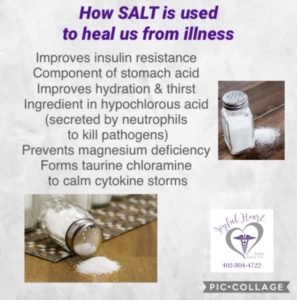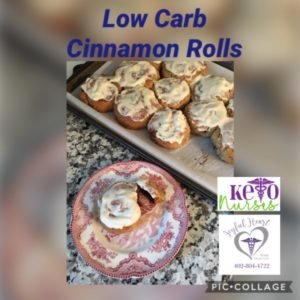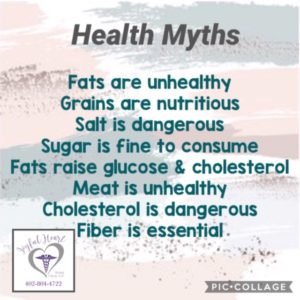So, how’s it going? Have you been working on your food diary? Did you take your measurements and photos? Which bulletproof coffee or tea recipe did you find? What labels have you been reading? What labels have shocked you? Today’s blog entry centers around the nutrition labels on commercial foods.
I hope you have begun reading them carefully. If not, it is time to start studying them. First off, always check for portion size; many foods come in “single-serve” sizes, but the nutrition label often says there are 2 or even 3 actual servings inside. A bottle of soda is a great example; a 20 ounce soda actually contains 2.5 servings, although it is sold as a single serving bottle. So, the 8 ounces contains 100 calories, but the 20 ounces contains 250 calories; the 8 ounce serving contains 27 grams of carbohydrates, but the 20 ounces contain 67.5 grams of carbs. The 35 mg of sodium in 8 ounces actually turns into 87.5 mg, or 2.5% of the entire day’s recommended intake of sodium. It’s no wonder glucose and sodium levels are so easily affected by high intake of soda.
The front of a package, bottle, or jar, is designed to convince you to make a purchase. Fronts of packages have millions of dollars invested in research and marketing. Companies design labels with ONLY one thing in mind….. to convince you, the consumer, to spend your money on their product. Companies will use phrases and words designed to trigger thoughts of “health” in the purchaser; words like low fat, no sugar, healthy, low salt, are used on the front of labels for only one purpose – to make a sale. I frequently tell patients to totally ignore the fronts of labels because wording and marketing can be very misleading. For example, when I company labels a food as low-salt, all it means is that there is a slightly lower amount of salt than in THAT SAME COMPANY’S REGULAR product. It doesn’t mean it has an amount of salt that a nurse or physician considers healthy or enough for good health.
Probably the most misleading ploy of food manufacturers is the use of sugars and the wide variety of names used instead of the word sugar. For example, pick up the bottle of soda you are drinking; or google a nutrition label of your favorite soda. There is no sugar in it. Most ingredient labels include sucrose or corn syrup, not sugar. That simple wording trick is how MANY food manufacturers get away with selling tons of sugar-laden products without ever including the word, sugar, on its labels.
Did you know that there are nearly 60 names for sugar? Manufacturers have researched and perfected methods of labeling to meet the laws the FDA sets forth, and yet still “sneak” in ingredients that can sweeten and flavor a variety of foods and drinks. One of the most common ingredients is “natural flavoring” and these flavorings can be kept “secret” as many are proprietary blends of spices and flavors that the company wants to keep private because of patent and copyright… But the FDA, nor any other governmental agency requires the release of these recipes or ingredients. This fact means that there can be additional sweeteners or fats, or other ingredients that you will never know about.
Sugar, confectioner’s sugar, glucose, caster sugar, sucrose, fructose, maltose, galactose, dextrose, dextran, organic raw sugar, cane juice, cane juice crystals, evaporated cane juice, caramel, agave nectar, tapioca syrup, barley malt, malt syrup, maltodextrin, beet sugar, syrup, sorghum, sorghum syrup, blackstrap molasses, molasses, molasses syrup, maple syrup, brown rice syrup, rice bran syrup, rice syrup, brown sugar, demara sugar, buttered sugar, carob syrup, coconut sugar, corn syrup, high fructose corn syrup, HFCS, corn sweetener, corn syrup solids, crystalline fructose, date sugar, diatose, diastatic malt, ethyl maltol, fruit juice concentrates, golden sugar, golden surup, honey, invert sugar, muscovado sugar, oat syrup, panela, panocha, treacle, turbinado sugar, and yellow sugar are the most commonly used terms for sweeteners.
There are also a variety of sugar alcohols that many companies use instead of sugars and corn syrup; some of the sugar alcohols include erythritol, sorbital, xylitol, glycerol, mannitol, isomalt, and more. While the sugar alcohols don’t typically contribute to elevated glucose levels, some of the sugar alcohols can be linked to some stomach and intestinal upset, like abdominal cramping or diarrhea. Most sugar alcohols are not quite as sweet as sugars and corn syrup; xylitol actually offers about the same sweetness factor as sugar. While sugar alcohols may not affect glucose as much as the other sweeteners, consumers still deserve to know the differences in the types of sugars and sweeteners in foods and drinks.
Now that you know about all the sneaky ways of food and drink manufacturers, you can make smarter decisions when shopping for your family. Reducing the amount of processed and chemical-laden foods can greatly improve your health and that of your family.
KetoNurses’ Homework Assignment #2: Look through your food diary over the past week or so and identify 2 or 3 processed foods you can live without; read labels and choose to keep foods that are the most natural, with the fewest chemicals and added sugars. Once you’ve identified a couple foods you are willing to give up, write them down in your journal. Make a commitment to eliminate these foods; try replacing them with something fresh, from the produce section. Or increase the fat intake at the meal with which you used to serve that food.




